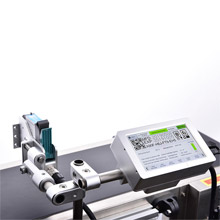Learn the working principle of the inkjet printer and conduct regular training and learning.
The basis for quick and better maintenance of the inkjet printer is our knowledge and understanding of the working principle and daily use of the inkjet printer.
Inkjet Printer
Generally speaking, the problem can be divided into two categories: circuit failure and ink circuit failure. First of all, no matter what model it is, it is necessary to have a certain understanding of the ink circuit diagram of the machine. After learning and understanding the ink circuit diagram, we can then know the position of the filter inside the machine and the direction of ink flow, as well as the nozzles, nozzles, and solenoid valves. Wait for the running sequence.
Generally speaking, the operation of the Inkjet Printer circuit is very complicated. Generally, the inkjet printer uses a single-chip microcomputer to control the overall solenoid valve, pressure pump, nozzle crystal oscillator and other components. It is very precise. If you understand the circuit knowledge, you can know that it is normal. Some printer operating parameters during use: such as pressure, viscosity, temperature, etc., can be found in time if there are any abnormalities.
The maintenance of the circuit part of the inkjet printer depends on different inkjet printers. The more common high-voltage faults, circuit board fuse burning, keyboard failure, electrostatic interference, all need the help of professional technical engineers of this model, here is a very important point, when installing, debugging and using the inkjet printer, the ground wire is also very Important, it can avoid the accumulation of some static electricity, which will affect the quality of the printing effect or cause damage to the machine circuit board. For any brand and model of inkjet printer, the grounding wire is very important.
TIJ System Supplier will also provide regular training on the use and maintenance of inkjet printers to the staff at the end of the production line of each customer, so that they have a deeper knowledge and understanding of the inkjet equipment, so as to better guarantee the smooth production work.

评论
发表评论